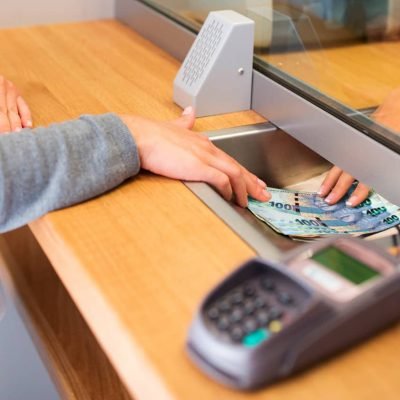With the proliferation of cash, many banks now provide cashiers tray for their customers. Cashiers trays are designed to protect cash from theft, but they can also help reduce noise and heat transfer in busy environments. In this article, we’ll discuss ways to reduce both problems using a cashier tray.
A cashier tray is an enclosed metal container that stores paper currency and coins. It’s typically used by banks, convenience stores, restaurants, casinos, and other businesses where large amounts of money are handled on a daily basis. The idea behind these trays is simple: they offer secure storage for large sums of money while minimizing the possibility of theft or loss due to mishandling.

Types of Cashiers Trays
Cashiers trays come in several different sizes and shapes depending on the needs of the business using them. They’re usually made out of durable materials such as aluminum or steel that resist wear and tear over time. Some models have built-in locks or lids for added security, while others may come with dividers or adjustable compartments for easy sorting and counting of bills and coins.
Benefits Of Using A Cashier Tray
Using a cashier tray has numerous benefits beyond just protecting your money from theft; it can also reduce noise levels in busy environments and keep temperatures low when handling large sums of money at once. Additionally, these trays make it easier to organize bills and coins for sorting purposes without having to constantly shuffle through stacks of paper currency every time you need change.
Reducing Noise With A Cashier Tray
One way to reduce noise in a checkout is to use sound-absorbing material, such as foam rubber, along the walls inside the cabinet. This will absorb sound waves travelling through the metal walls, so less noise will escape to the environment outside the tray during transactions – and also help to keep conversations between staff more private! You can also place felt pads under each corner of the tray for extra protection against vibration sound transmission and additional stability on slippery surfaces such as tiled floors or countertops.
Reducing heat transfer with a checkout tray
Heat transfer is another issue that can be addressed when using a cashier tray; this occurs when stored currency absorbs external sources of heat (such as direct sunlight) and then radiates it back out, causing discomfort to those handling it – not ideal when dealing with long queues! To minimise this problem you should use an insulated liner such as neoprene, which will help to trap heat within itself instead of allowing it to escape to the outside, keeping internal temperatures down even on hot summer days or bright afternoons indoors near windows/doors etc.

Conclusion
In conclusion, the use of a cashier tray has many benefits, including reducing both noise levels in busy environments and heat transfer from stored currency – both important considerations if you’re looking for ways to improve customer service in your business! Taking a few simple steps, such as adding sound-absorbing material to enclosures or insulating liners around hot spots, will go a long way to ensuring smooth transactions without the unpleasant distractions caused by excessive external noise or high temperatures!
